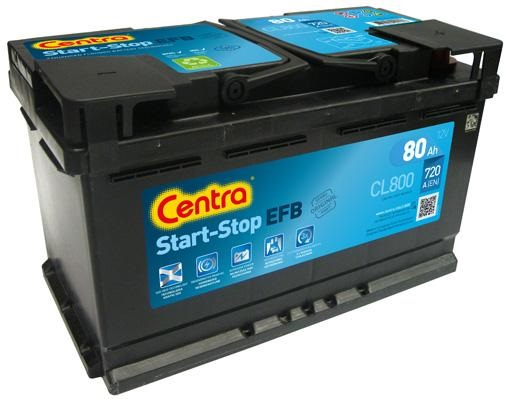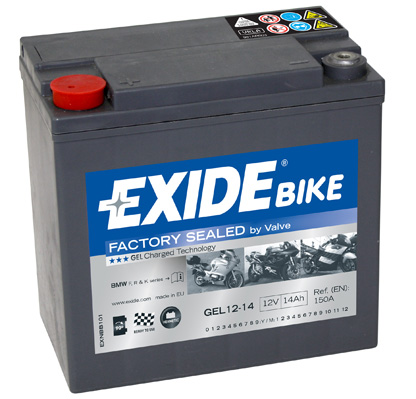
When you are guaranteed to be able to start your car's engine in all weather conditions you need to keep the battery in good working condition. Their average useful life is 5-7 years. It is advisable to replace this component at the end of this period. Read on and find out which battery types are most in demand and most efficient these days. We will also explain what you should look out for when choosing a car battery.
More on the topic: What to do when the car battery is empty?
Contents
Types of car batteries
Wet batteries
Their electrodes consist of plates covered with sponge lead or lead dioxide. A solution of sulfuric acid is used as the electrolyte. Such batteries are the most commonly used, are inexpensive and, compared to other types, are less susceptible to overcharging and voltage fluctuations in vehicle electrical systems. However, deep discharge is very dangerous for these batteries: it leads to sulphation of the plates. Regular undercharging, which occurs during short-distance trips in the cold season, is also not recommended. The electrolyte can freeze at low temperatures. Also, it evaporates. Therefore, you should monitor the electrolyte density in the battery unless it is marked maintenance free, and occasionally dilute it with distilled water.

Improved Wet Batteries (EFB)
They differ from conventional lead-acid batteries in their plate configuration: a special grid material is applied to their positive poles. It is intended to prevent the destruction of the sponge lead and sulphation of the plates, thereby extending the life of the battery. These batteries perform better, charge faster and can recover up to 100% of their original capacity after a deep discharge. They also have higher cold cranking amperages. They are slightly more expensive than conventional lead-acid batteries, but are more efficient and last longer. In addition, they maintain their functionality at temperatures as low as -50 °C. However, such energy sources are not compatible with vehicles with regenerative braking systems.

AGM batteries
Their main difference from standard batteries is their fiberglass layer, which absorbs liquid electrolyte. Such batteries charge 2-3 times faster than regular ones. Although they are the same sizes as other types, their capacity is significantly higher. They are also more resistant to vibration. A disadvantage, however, is the higher price. Overcharging and storing in a fully discharged state are dangerous with this type of battery.

gel
Just like those listed above, these belong to the lead-acid battery family, but the electrolyte they contain has been immobilized and gelled by the addition of silicon dioxide. This extends the life expectancy of the battery, which in some cases can reach up to 10 years. Such batteries are resistant to deep discharge. They can withstand up to 400 cycles whereas traditional wet cell batteries can only withstand 20-30. In addition, they have high starting currents, which are 2-2.5 times higher than conventional ones. So you can easily start the engine even in the coldest winter. These types of batteries also charge faster, which in turn avoids problems caused by frequent short-distance trips. They have an extremely low self-discharge rate, but are expensive. When using them, it is very important to monitor the condition of the electrics, especially the voltage regulator. Even the slightest overcharge causes irreversible changes in the electrolyte levels and is harmful to this type of battery.

Important note: Before purchasing a battery of a different type than the standard one for your car, you should check the vehicle manual to make sure it is allowed by the manufacturer. Using an unsuitable battery is dangerous!
Four characteristics to consider when choosing a battery
Capacity
This is measured in ampere hours. This property quantifies the current that a battery can deliver during a 20-hour discharge at a voltage greater than 10.8V. For example, a 72Ah battery has enough capacity to deliver 3.6A of current for 20 hours. The more powerful a car is, the higher the capacity of the battery it needs.
More on: How do you check your car battery?
Cold start current
This value is measured in amperes. It shows the maximum current that the battery can deliver in the first few seconds to start the engine at -18°C. This value defines whether the battery has enough power to start the engine in winter. This value should be over 255 A for cars with petrol engines and over 300 A for diesel engines.
Dimensions
They should match the sizes of standard equipment. Otherwise there will be difficulties in installing the battery. For example, batteries made for American cars have side terminals, while those for European cars have the terminals on the top. They also have an internal thread.
Polarity
It can be normal or vice versa. In the first case, the positive pole is on the left, in the second on the right. Normal polarity is usually denoted by a 1 or an L – reversed by a 0 or an R. The polarity of a new battery should be the same as that of an old one, otherwise the connection cable will not be long enough.
Important note: Choose products from known ones Brands like Bosch, Varta, Vemo, Exide, Ipsa, Energizer, Herth+Buss Elparts or Magneti Marelli. Their products are of the highest quality and will serve you for years with the right care.
Conclusion
Stable operation of electronic equipment and engine start directly depend on the condition of the car battery. Because of this, it is very important to choose a product that fits the vehicle specifications. Information on the standard parameters of the battery used can be found on the housing or in the vehicle's operating instructions. We advise you not to use equipment with other parameters. This can be dangerous. Shop in the CarTipsandmore online shop. Here you will find only reliable products.
